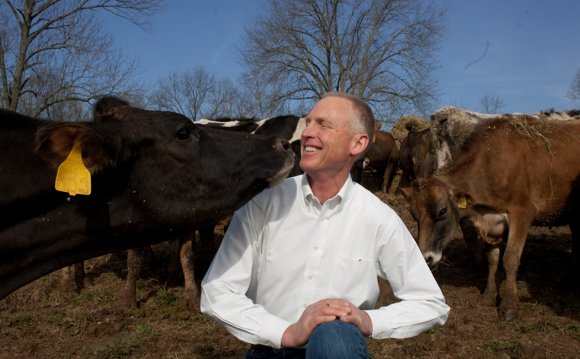
Milk Proteins :
|
The total protein component of milk is composed of numerous specific proteins. The primary group of milk proteins are the caseins. There are 3 or 4 caseins in the milk of most species; the different caseins are distinct molecules but are similar in structure. All other proteins found in milk are grouped together under the name of whey proteins. The major whey proteins in cow milk are beta-lactoglobulin and alpha-lactalbumin. The major milk proteins, including the caseins, ß-lactoglobulin and a-lactalbumin, are synthesized in the mammary epithelial cells and are only produced by the mammary gland. The immunoglobulin and serum albumin in milk are not synthesized by the epithelial cells. Instead, they are absorbed from the blood (both serum albumin and the immunoglobulins). An exception to this is that a limited amount of immunoglobulin is synthesized by lymphocytes which reside in the mammary tissue (called plasma cells). These latter cells provide the mammary gland with local immunity. Caseins have an appropriate amino acid composition that is important for growth and development of the nursing young. This high quality protein in cow milk is one of the key reasons why milk is such an important human food.Caseins are highly digestible in the intestine and are a high quality source of amino acids. Most whey proteins are relatively less digestible in the intestine, although all of them are digested to some degree. When substantial whey protein is not digested fully in the intestine, some of the intact protein may stimulate a localized intestinal or a systemic immune response. This is sometimes referred to as milk protein allergy and is most often thought to be caused by ß-lactoglobulin. Milk protein allergy is only one type of food protein allergy. |
Caseins is composed of several similar proteins which form a multi-molecular, granular structure called a casein micelle. In addition to casein molecules, the casein micelle contains water and salts (mainly calcium and phosphorous). Some enzymes are associated with casein micelles, too. The micellar structure of casein in milk is an important part of the mode of digestion of milk in the stomach and intestine, the basis for many of the milk products industries (such as the cheese industry), and the basis for our ability to easily separate some proteins and other components from cow milk. Casein is one of the most abundant organic components of milk, in addition to the lactose and milk fat. Individual molecules of casein alone are not very soluble in the aqueous environment of milk. However, the casein micelle granules are maintained as a colloidal suspension in milk. If the micellar structure is disturbed, the micelles may come apart and the casein may come out of solution, forming the gelatinous material of the curd. This is part of the basis for formation of all non-fluid milk products like cheese.
|
Centrifugation of the skim milk in an ultracentrifuge (usually about 50, 000 x g or greater) results in pelleting of the casein and in a supernatant called whey (also sometimes called the serum phase of milk) which contains the water, lactose and soluble non-casein proteins. Once casein is removed, then by definition every other protein left in the milk preparation is a whey protein. Casein molecules can also be separated from the whey by precipitation of the casein with acid (similar to what happens in the stomach when milk is consumed) or by disrupting the micellar structure by partial hydrolysis of the protein molecules with a proteolytic enzyme. In the stomach of the young of many species is an enzyme called rennin which specifically hydrolyzes part of the casein micelle resulting in formation of a curd. A classic precipitation method for casein in cow milk which is done in the laboratory is to slowly add HCl (0.1 N) to lower the milk pH to 4.6. The casein will gradually form a precipitate while relatively little of the other milk proteins will precipitate. Different combinations of controlled acid precipitation and enzymatic hydrolysis of casein are the foundation of the cheese industries. Often specific bacterial cultures are used to establish the conditions for lowered pH and secretion of proteolytic enzymes which form the different types of cheese. Because the casein micelle is in suspension, it can be separated from the rest of milk by centrifugation at a very high speed. Generally the milk is first defatted (the cream is removed) from whole milk by low speed centrifugation (at about 5, 000 to 10, 000 x g), resulting in the cream layer at the top, the aqueous supernatant, and a small pellet of leukocytes and other debris. The aqueous supernatant is the skim milk (sometimes called the plasma phase of milk). |
YOU MIGHT ALSO LIKE












